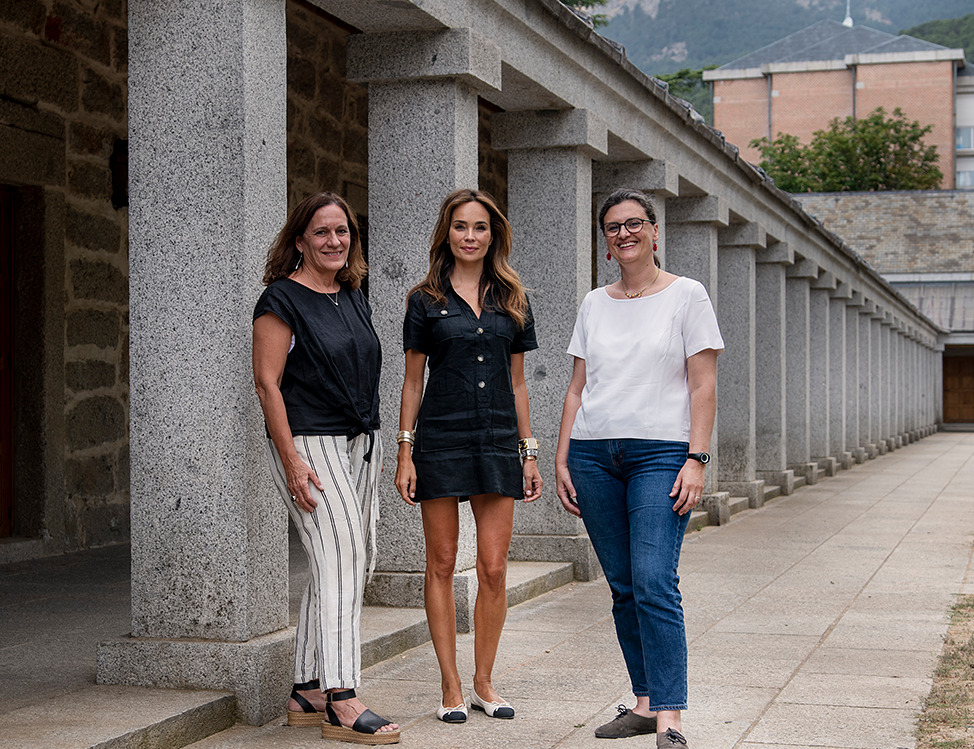Until a few weeks ago, Elena Blanch and Margarita González were the Dean and Vice Dean of Research, respectively, of the UCM Faculty of Fine Arts. This week they are in San Lorenzo de El Escorial trying to cover, as they themselves admit, a gap in the curricula of artistic careers: what the current art market is like, what its main agents are and what the relationship should be like with them. “These are things that are not happening in regulated training, because you don’t get to everything, but, nevertheless, for an artist who wants to live from this, knowing what their rights are, their obligations, the legality that governs, how they can be organized, how they can be associated, to live in a world as competitive as the current one, is an absolute necessity ”, considers Elena Blanch.
– Is living from art now more complicated than before?
– Margarita González (MG): Actually, I think not. What is necessary is to know the context in which a career is going to be developed professionally to avoid situations of precariousness or fragility that could be remedied with better information on how agents in the sphere of art are articulated. And that is what this course really aims to do.
– Which agents are we talking about?
– MG: For example, the roles of public and private institutions, collectors, curators, cultural managers … All the agents that are part of this world, in which each one plays a role and a very specific function that facilitates the visibility of emerging Spanish artistic talent.
– Elena Blanch (EB): Formerly there was the patron, there was the artist and perhaps society understood him better. Today there are many ways and places where one can express oneself, many other figures that have appeared in the art scene such as those mentioned by Margarita, the curators, the gallery owners… A lot of other agents, that for a student or an artist who wants to become professional, we think it is very important to know them. The beauty of the course is that it is focused on artists, on the needs that we have detected that artist have.
– Does the art ecosystem in Spain work well?
– MG: The visibility of Spanish art is more limited than it should be due to the quality and capacity of Spanish artists and Spanish art management structures. What this course deals with are, first, to name all these agents, and second, to find how these relationships are articulated to favor a much more collaborative and much more professionalized work for all of them.
Why is there such low visibility?
– EB: There are many agents that influence. On the one hand, it is true how little artists are used to working together and coming together. It is a profession too individualistic in a certain way. That doesn’t help either. Then, in Spain there is still more support, I think, for Spanish art itself, for Spanish artists. Perhaps we are too dazzled by artists from abroad and little value is given to the artist from here. And we have very good artists.
-MG: Very good. And perhaps, above all, a naturalness is lacking when it comes to living with contemporary art forever in settings that go beyond the occasional contemporary art exhibition itself. From the coexistence with artists of contemporary art from the first stages of children’s formation, it is surprising that it is not normalized that they learn to be spectators of the art of their own time, which is an anomaly. Even incorporating artists into other interdisciplinary work teams, because we know that the artist’s vision contributes to that oblique gaze that often favors advances in other fields. such as science, philosophy, etc, etc. And to achieve this naturalness, it is necessary to strengthen the visibility structures of Spanish art.
– EB: Also, artists are not used to working with other agents; there should be much more collaboration. They must also support each other more among the artists themselves to be better known. This is a difficult world and living solely from the creation of art is a race for long-distance runners and it costs a lot.
– MG: And to achieve that, suddenly, there is a recognition, a legitimation of the importance of contemporary art that is much greater, less punctual, with projects established in the medium and long term, with cultural and educational policies that assimilate the importance that it has, value it, give it even more prestige and favor its permeation in other areas that are going to benefit from that wealth.




